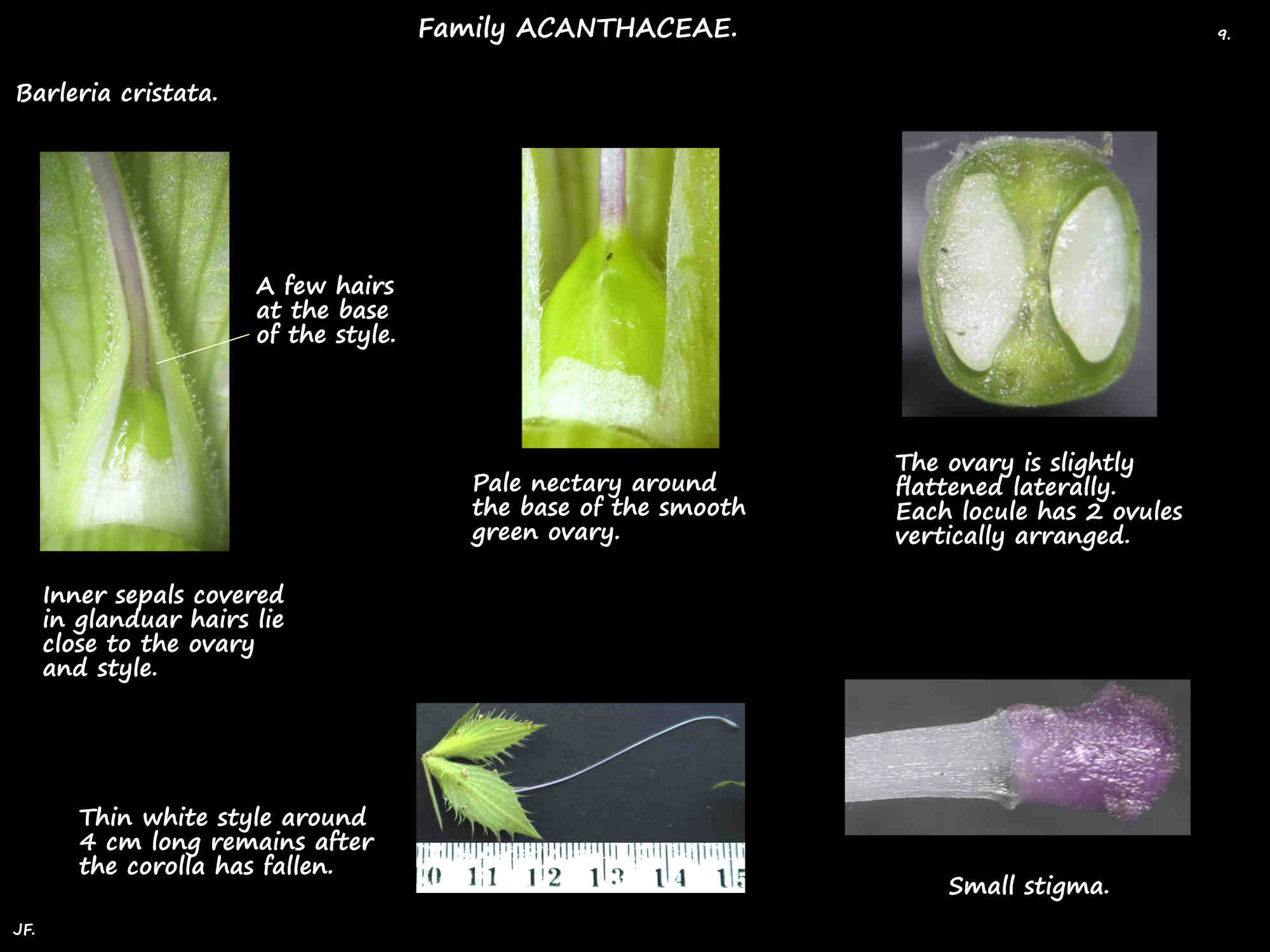Barleria cristata
The Philippine violet or Bluebell Barleria is naturalised in south-eastern Queensland.
It is fairly commonly seen in gardens as a single shrub or in hedges.
They are evergreen shrubs mostly around 1 to 2 (3) m high and almost as wide.
The multiple stems start branching near the ground.
The younger ones are angled and the older woody ones are almost circular.
The stems are green then develop purplish blotches.
Stems have dense simple hairs while older stems have few or none.
Hairs lie flat along the surface and are most dense around the nodes.
The opposite and decussate leaves are on petioles around 3 to 5 (10) mm long.
Blades are up to 12 or 15 cm long by 4 to 5 cm wide.
They can be ovate to elliptic or lanceolate with a smooth edge and usually a pointed tip.
They are dark green above and paler underneath.
The pale midrib is prominent on the lower surface.
There are hairs lying flat on the petiole and both blade surfaces.
They are scattered on the upper surface and dense along the veins on the lower.
There are also some small glandular hairs.
Inflorescences are terminal and/or axillary and a solitary flower to a small cluster.
Frequently there is only a single flower in a leaf axil.
Short side branches, up to around 5.5 cm long grow from the axils along the main stem.
The opposite pairs of leaves along these side branches are much smaller than those along the main stem.
There can be up to 5 pairs of leaves along the side branches each with a flower in the axil.
The flowers are on short peduncles with a pair of bracteoles.
The linear bracteoles (spines) are up to 1.5 cm long and 2 mm wide.
They have a pointed tip and there may be teeth on the edges towards the tip.
There are simple and glandular hairs on the outer surface and edge.
The bracteoles persist into the fruit as dry soft spines.
Just above these is the calyx with 4 lanceolate sepals (bracts) in 2 whorls at right angles to each other.
In the outer pair the larger one is up to 2 cm long by 0.8 cm wide.
The other is slightly shorter and narrower.
Initially green and leaf-like they become dry, brown and membranous on the fruit.
The 2 linear inner sepals are up to 8 mm long but only around 2 mm wide.
The edges of all the sepals have long thin teeth with glandular hairs and they are tipped with a long spine.
There are also simple hairs on the outer surface.
The flowers are up to 6 or 7 cm long with a narrow funnel-shaped tube and 2 lips.
The upper lip has 4 oblong lobes and the obovate lower lobe is slightly larger.
Lobes can be up to 1.8 cm long and the lower one has a small notch at the tip.
There are simple and glandular hairs on the outer surface.
Species plants have mauve to pink corollas.
Of the 5 stamens 2 are long and fertile while the 2 smaller ones are usually infertile.
The fifth is reduced to a small 5 mm long staminode or is absent.
The 2 fertile stamens are 2.5 to 3 cm long and extend beyond the corolla tube.
All have simple hairs on the base of the filament.
The 2 pollen sacs or thecae are 2 or 3 mm long with one slightly higher than the other.
The 2 smaller stamens may have thecae but they usually do not produce pollen.
The cup-shaped nectary around the base of the ovary has a slightly lobed margin.
It may cover over half the ovary.
The 3 mm high ovary is laterally compressed and has 2 locules each with 2 ovules.
The style is up to 4.5 cm long with hairs at the base.
The narrow pink stigma is around 5 mm long with 2 lobes.
The fruit are shiny ellipsoidal capsules up to 2 cm long and 0.6 cm wide.
There are up to 4 flattened seeds around 4 mm wide with hairs lying flat on the surface.
J.F.












